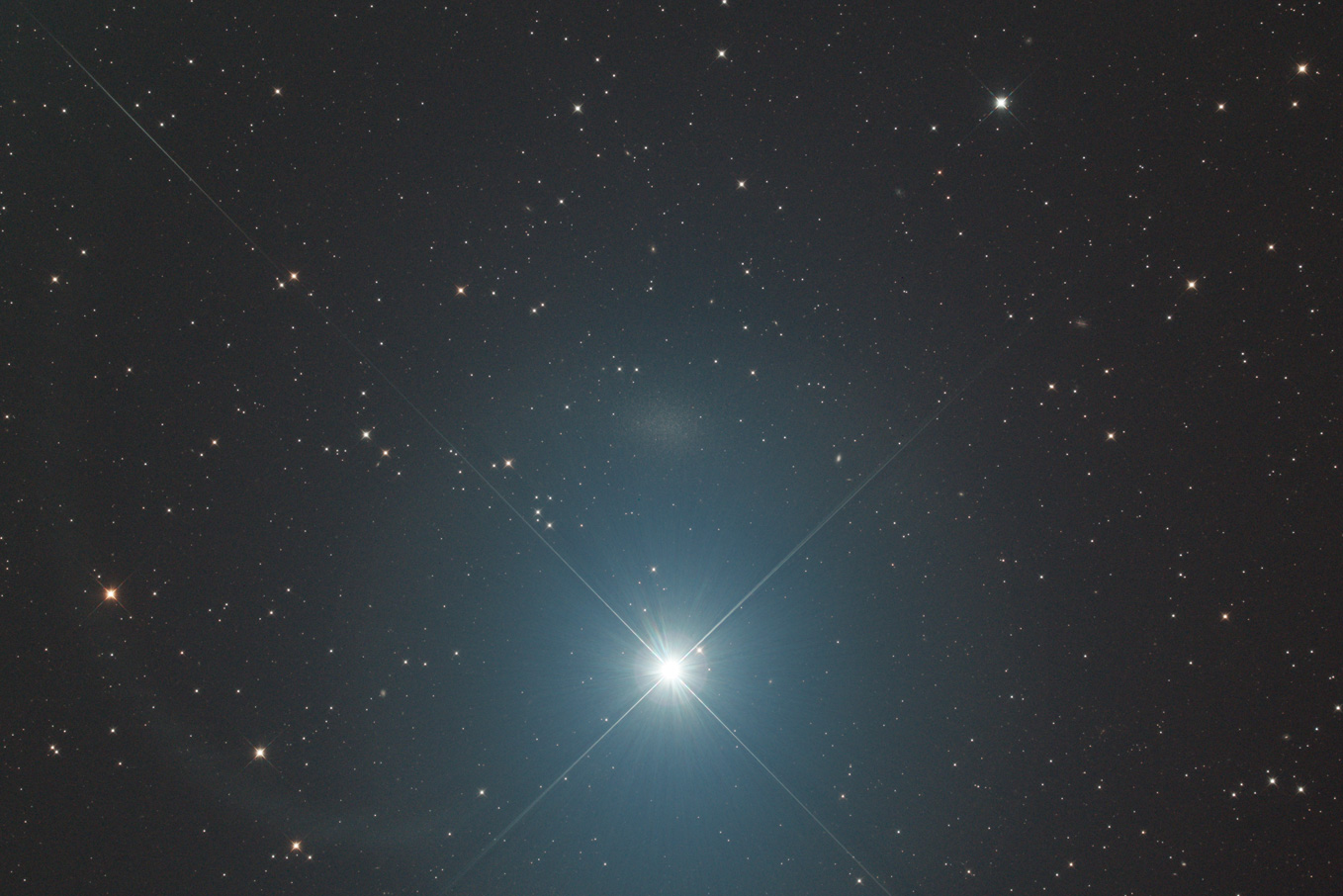| Date & Time: | Feb 10 2024, from 25:00 to 26:12 JST(+0900) |
| Composed 10 shots with 8 minutes exposed |
| Optical: | TAKAHASHI 16cm(6.3") epsilon (f=530mm, F3.3) |
| with LPS-D1 Light-pollution suppression filter |
| Auto-guided with TAKAHASHI JP Equatorial & SBIG STV |
| CMOS Camera: | ZWO ASI2600MC Pro (Cooled temp.: -25°C) |
| Location: | Ooizumi, Hokuto city, Yamanashi pref. |
| Leo I / Galaxy, type dE3 |
|---|
| R.A. | 10h 08m 27.4s (2000.0) |
|---|
| Dec. | +12° 18' 27" (2000.0) |
|---|
| Apparent Size | 11.0×8.0' |
|---|
| Radial Velocity | N/A |
|---|
| Magnitude | 11.1 |
|---|
| Distance | 600 thousand light yrs. |
|---|
| Garoup of Galaxies | Local Group |
|---|
| Other IDs | UGC5470, MCG2-26-27,
DDO74, PGC29488 |
|---|
I'd like to introduce you a bit rare celestial object in Leo.
This picture shows you a celestial field just north of alpha Leonis, Regulus.
There is an extremely faint elongated galaxy Leo I (Leo-one) just 20 arc minutes north of Regulus.
Though Leo I has a size of about 10 arc minutes, is very faint magnitude around 11.
It's absolutely impossible to detect it with naked eyes in spite of using fairly large scopes.
Leo I is a member of the local group of galaxies includes our Galaxy and the Andromeda Galaxy and so on.
The galaxy was discovered in 1950's in an astronomical photograph.
This image has been cropped with an equivalent focal length of 700mm.
|

